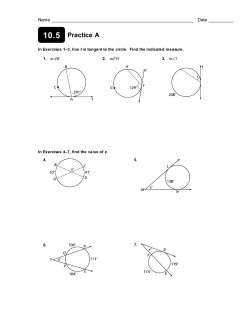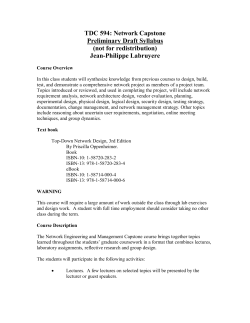
KTH | SD2411 Lättkonstruktioner och FEM 8,0 hp
AF1002 Buildings and Civil Engineering Structures 7.5 credits Hus och anläggningar Course syllabus for AF1002 valid from Spring 16, edition 1. Learning outcomes After having passed the course, the student should be able to: Describe the purpose and function of the technical components of a structure with focus on the load carrying design, building technology, and installations. Explain the basics concepts in structural design, building physics and installation technology and, based on that, be able to understand and analyse simple engineering models. Apply simple analysis methods to estimate the influence of loads and regulations on the load carrying capacity, the thermo-technical properties, and the energy consumption for a building. Conduct a superficial inspection of existing structures, including the review of the drawings and documentation, to give a description of the design and properties. Suggest improvement measures and identify risks with conversion and extension. Course main content This course gives an introduction to the modern construction and architectural history. The development of the buildings and structures of today is reviewed from a technical perspective. In order to create a basis for further studies in building and civil engineering, fundamental concepts in structural design, building technology, and installation technology is reviewed. In structural design, frequently occurring structures and foundations are treated. Emphasis is placed on loads, their origin and how they should be combined in the design of load-bearing structures. The building technology part deals with concepts and principles for the technical characteristics of the building envelope, such as the distribution of heat and humidity, the influence of thermal bridges and moisture safety. Proposed actions for problems in existing buildings treated. In installation technology, systems for heating and ventilation are treated. An introduction to calculation of energy consumption and estimation of costs related to conversion and extension is also given. Eligibility Introduction to the Planning and Building Process, Physics for the Built Environment, Geology and Geotechnical Engineering, Graphic Information Systems Course syllabus for AF1002 valid from Spring 16, edition 1. Page 1 of 2 Literature Så byggdes staden (från kursen ”Samhällsbyggnadsprocessen”) Så byggdes husen 1880-2000 Den tekniska delen i kompendiet ”Samhällsbyggnadsprocessen” Bärande och Buret, kompendium i konstruktionsteknik och grundläggning. Installationsteknik för S2, kompendium Byggnadsteknikens grunder KTH 2012 De två första böckerna köps på kompendieförsäljningen. Kompendiet ”Samhällsbyggnadsprocessen” från kursen AI1137 Samhällsbyggnadsprocessen. Övriga kompendier köps på teknologexpeditionen, Byggvetenskap, Brinellvägen 23. Examination PRO1 - Project Work, 3.0, grade scale: P, F TEN1 - Examination, 3.0, grade scale: A, B, C, D, E, FX, F ÖVN1 - Exercises, 1.5, grade scale: P, F Requirements for final grade Written exam (TEN1, 3 hp) grade A - F Project task (PRO1; 3hp) grade P/F Exercises (ÖVN1 1,5 hp) grade P/F The examination is divided in three parts: a written exam, mandatory exercises and a project. Assessment criteria are announced when the course starts. Course syllabus for AF1002 valid from Spring 16, edition 1. Page 2 of 2
© Copyright 2025



















